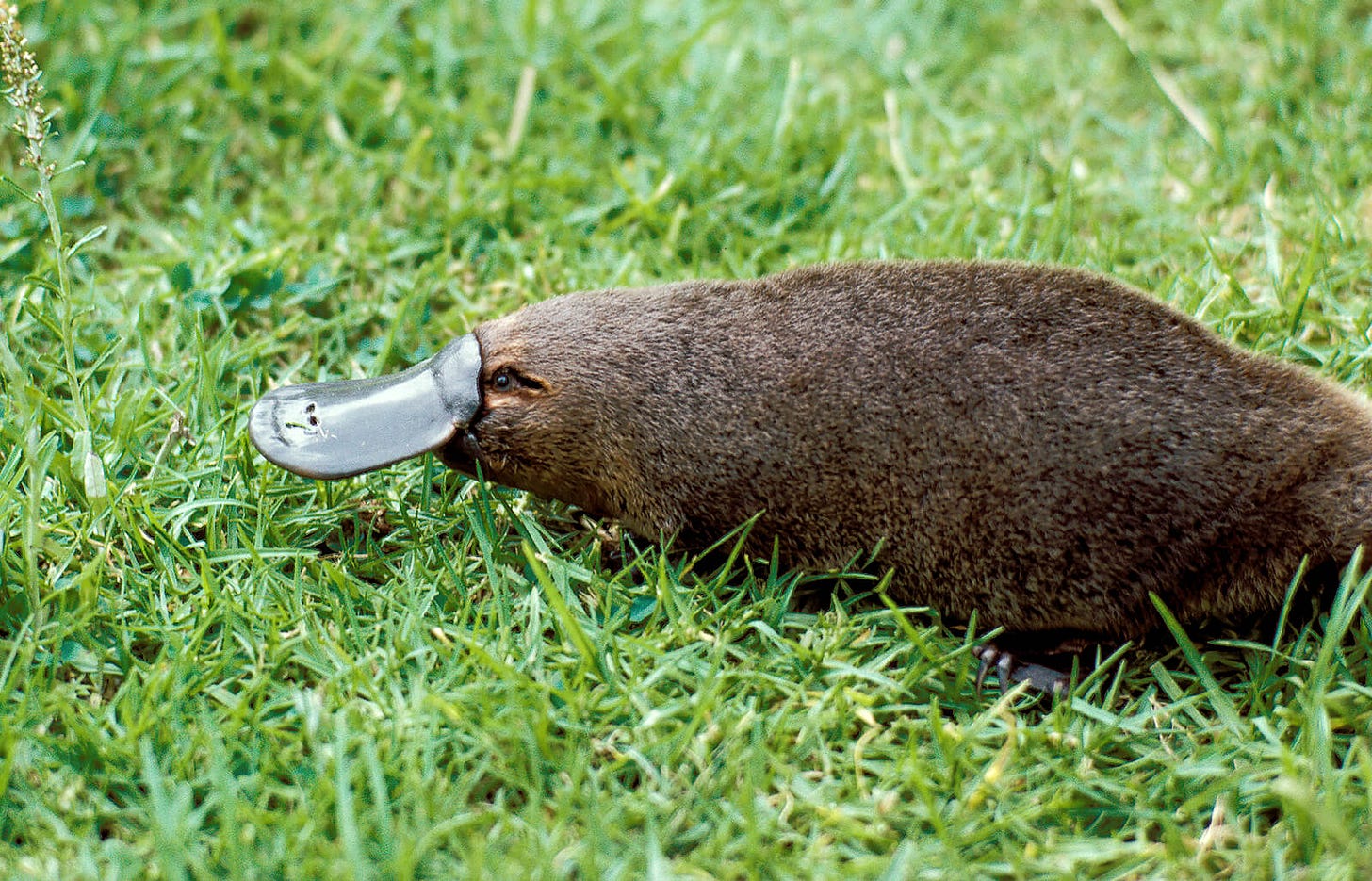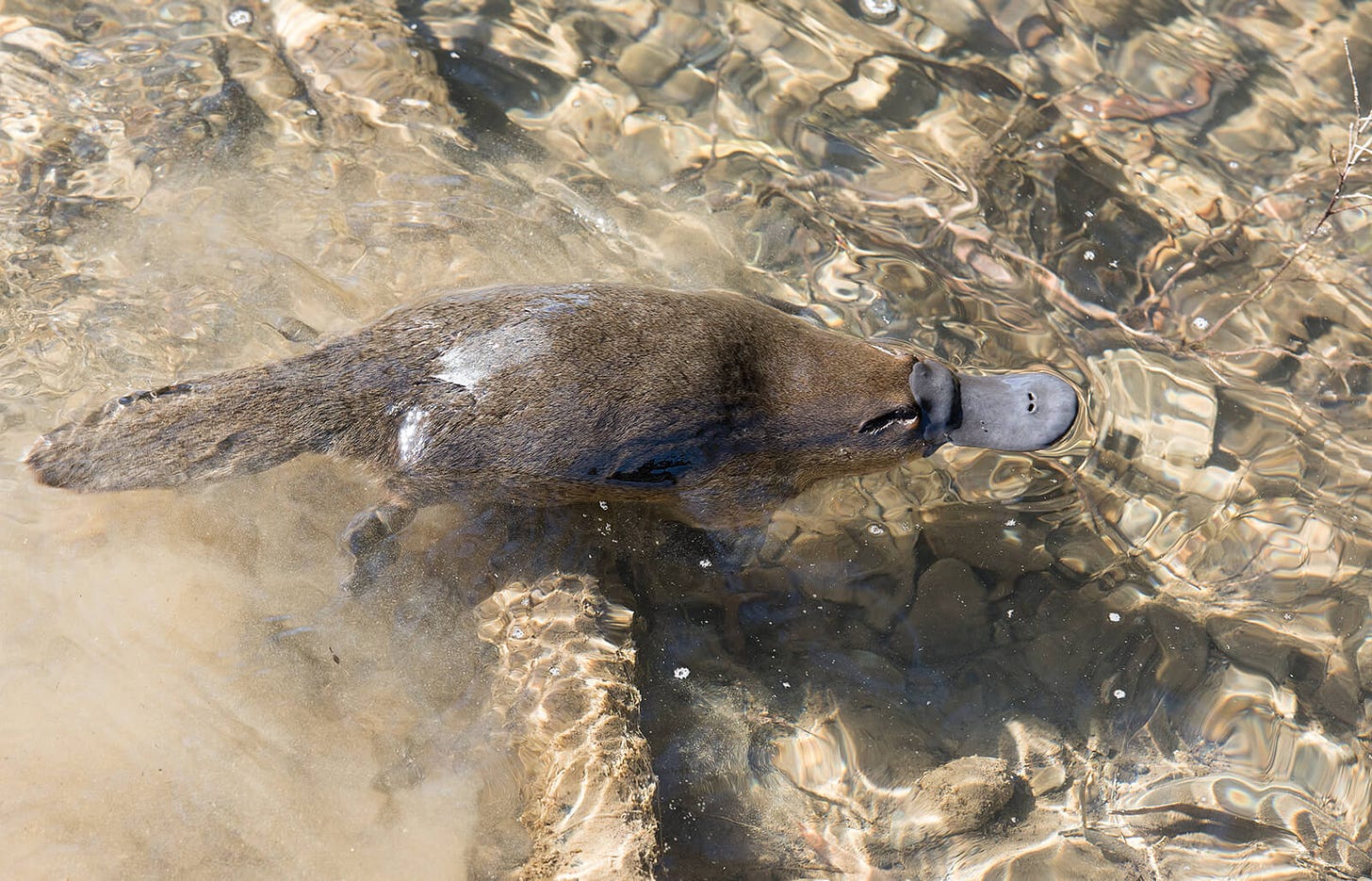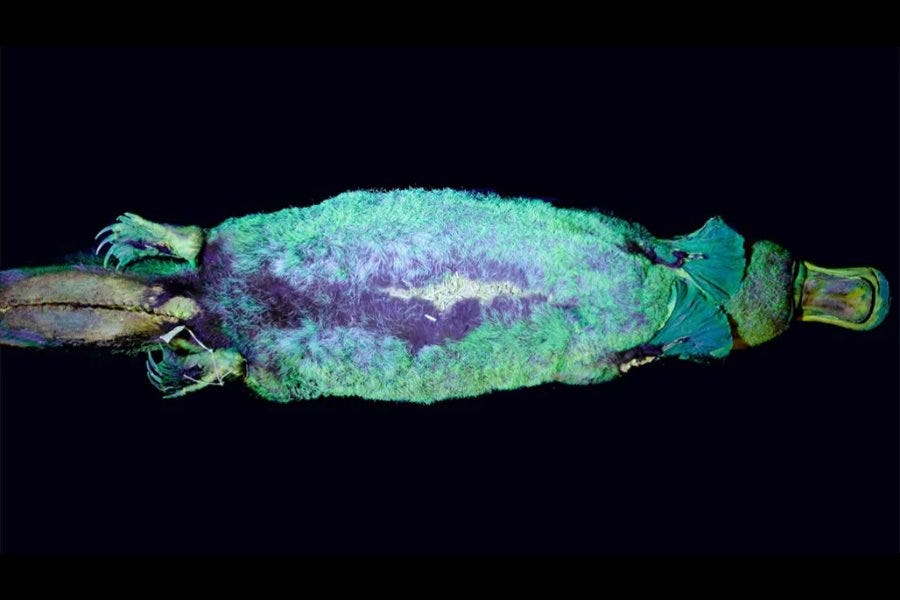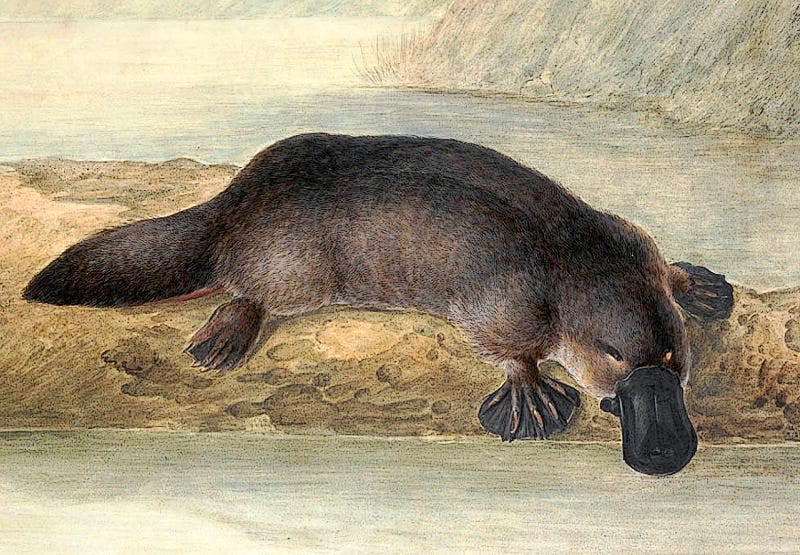There are plenty of strange creatures that walk, swim, fly, and slither around our world; humans being one of the strangest for sure. However, there is one creature in particular that is so peculiar that it even led one 18th century naturalist to believe that it was some sort of artificially assembled hoax…and he didn’t even know half the weird stuff about this animal! The creature to which I refer is the platypus—the duck-billed, egg-laying mammal. The platypus is one of those animals that seems as though it was dreamed up for some fairytale universe, yet somehow found its way into our reality, which is why I wanted to dedicate an edition of our newsletter to learning about this odd and charming creature.
Origins and ancestry
After inspecting the creature and determining that it was not, in fact, a practical joke, Dr. George Shaw, the previously mentioned 18th century naturalist, named the animal Platypus (from the Greek for “flat foot”). The platypus, which was already known by many names to Aboriginal peoples prior to Shaw’s observations, primarily makes its home in Australia.
The platypus is one of only five remaining species of monotreme, which is an order of mammals that lay eggs; the remaining four are all different species of Echidna. Platypuses are the sole surviving members of their ancestral genus (Ornithorhynchus), which is quite sad, because I would have loved to see what their cousins looked like!
Some strange features

Now that we know a little bit about the history of the platypus, let’s discuss some of the things that make it so peculiar, starting with its feet. As we learned from their name, platypuses have flat webbed feet, which help them swim very efficiently through their freshwater habitats. The webbing isn’t all that’s weird about their feet—male platypuses have sharp spurs just above their rear feet that secrete venom as a form of defense. That’s right, these mammals are venomous! If you ever have the misfortune of being poked by one of these, it won’t kill you, but it won’t feel good!
Next on our list of strange features is the large bill that protrudes from the front of the platypus’ face. Their bill is almost rubbery in texture and is used to help them find food in rivers and streams. When hunting for food (shrimp, bugs, tadpoles, etc.), platypuses don’t use their bill for smelling their next meal, in fact they aren’t looking or listening either (they literally close their eyes when hunting). So how do they find their snacks? Electrical sensors. The platypus bill is equipped with around 40,000 electric receptors that enable it to detect nearby motion via electric currents emitted from other creatures. You know what other creature uses this method? Sharks!
The weirdness doesn’t stop there. One of the defining characteristics of monotremes is their reproduction process, which involves laying eggs instead of internal gestation followed by live birth, which is the typical process for mammals. After laying the eggs, the female platypus will incubate them in a nest that she created. Once the eggs hatch, the mother will feed the baby platypuses with milk. However, the milk will not come from nipples, for that would be too mammalian for this mammal. Instead, milk secretes from the mother’s glands onto her fur, from which the younglings drink it up…quite strange indeed.
Even stranger features

Most mammals need teeth to chew their food, well apparently not these mammals! While platypuses are born with a set of teeth, they eventually lose them in exchange for pad-like structures comprised of keratin, which are used to grind down their food.
Once the food is “chewed” and swallowed, it won’t proceed to the platypus’ stomach, because again, that would be too normal. The reason the food doesn’t end up in their stomach is because they don’t even have a stomach, or at least not the kind that almost all other mammals have. Typically, the stomach is a place for food to be broken down with acids and enzymes, but this process doesn’t occur during platypus digestion. Instead, the ingested food goes into a small pouch where mucus-rich fluid is mixed in to help nutrient absorption before the food continues down the digestive tract. The prevailing belief is that platypuses do such a good job of grinding down their food with their pads that no further digestive aids (such as enzymes) are needed.
While I’m sure continued study of the platypus would yield many more strange facts, I will share one more of this creature’s peculiarities: it glows! When exposed to ultraviolet (UV) light (which we can’t see with the naked eye), the platypus’ fir reflects it as visible light, creating a fluorescent effect. While the platypus is not the only creature to have this effect, it only feels right that something that is known for being so strange might as well add glowing to the list of its many fun characteristics.

In conclusion
I think we can count ourselves lucky that the platypus was able to survive eons of evolution and external threats, for it represents the rich variety of lifeforms this planet has supported throughout its history. As our species moves forward, I hope we prioritize the preservation of all the wonderfully weird creatures of the world like the amazing platypus!
Did you think I would do all this talking about platypuses and not show you a video of them being adorable? Think again!
LAST WEEK’S POLL
Thanks again to those of you who provided input on last week’s poll. This type of feedback helps me create the best possible content for you! Looks like you all prefer a mix of longer single topic posts and shorter multi-topic posts, so I’ll try to change things up every now and again.



Well this was just delightful! Just to add one “fact”: according to the kids’ show Phineas and Ferb, this “semi-aquatic egg-laying mammal of action” become a secret agent when our backs are turned—or at least Perry the Platypus does!
As someone who considers himself somewhat of a platypus aficionado, I can happily say this was great. Bravo :)